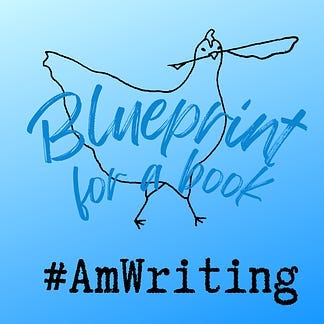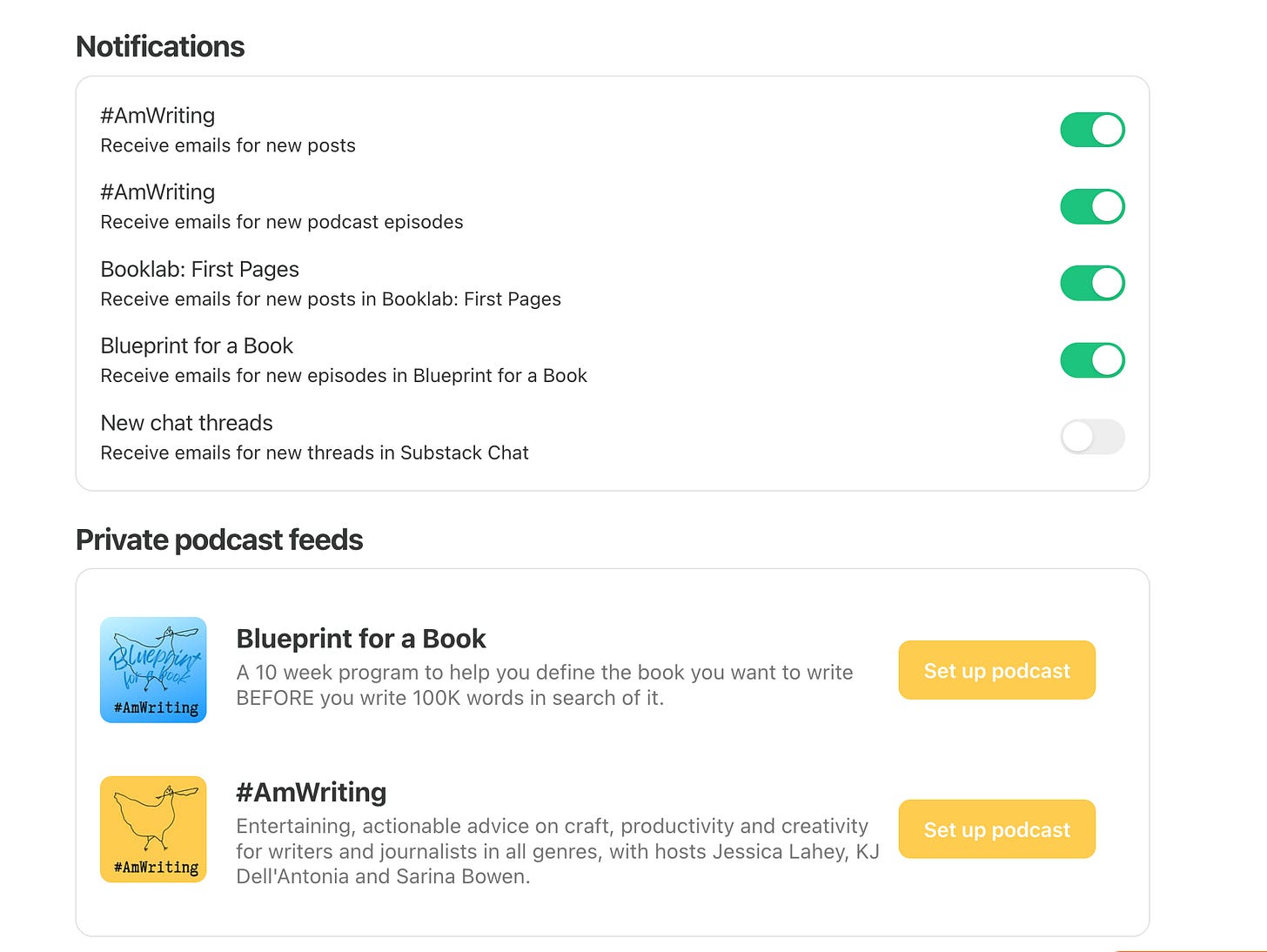Overcoming Pantsing Pitfalls: How the Blueprint Method Can Save Your Story
A guest post from Stuart Wakefield, one of our Blueprint Summer Sprint coach hosts.
As a new writer, it's tempting to dive headfirst into your story with little more than a rough idea and a lot of enthusiasm. This approach, often called "pantsing" (writing by the seat of your pants), can feel liberating at first. However, many writers soon find themselves lost in a maze of plot holes, inconsistent characters, and tangled storylines. If you’ve ever started strong only to hit a wall of frustration, you’re not alone.
I pantsed my first book, and although I kept telling myself that I needed to get it down on the page to make sense of it, nothing could have been further from the truth. It was an absolute mess, took over a year to revise, and as I look back at it, I cringe. (To be fair, if we don’t look back at our work and cringe, it’s likely to mean that we haven’t made progress.)
It wasn’t until I was training as an Author Accelerator book coach that I discovered the Blueprint method which offers a structured yet flexible framework to guide your creativity and keep your story on track.
I work with new writers, and I can always spot a pantsed manuscript. Want to know how?
Plot Holes and Inconsistencies
Plot holes and inconsistencies that confused me and made the story hard to follow. I’ve seen characters suddenly gain a new skill out of nowhere, die then reappear with no explanation, the goal of a trilogy be resolved in the first book, and events that contradict earlier plot points.
Lack of Direction
A lack of direction, resulting in a meandering plot that struggled to reach a satisfying conclusion. It’s clear the writer started with an exciting premise but found themselves unsure of how to progress, leading to a stalled story, especially in the malignant, muddy middle. Simply put, the story didn’t go anywhere because the writer didn’t know where the end was.
Weak Character Development
Flat, inconsistent characters that weren’t developed and planned from the start. And worse—because I’m obsessed with character—motivations and actions that changed arbitrarily, making them less believable.
Difficulty in Maintaining Momentum
Lost momentum. I can see where the initial excitement waned, and without a plan, where the writer found it hard to push through challenging sections of the story.
How the Blueprint Method Can Prevent These Issues
The Blueprint method offers a structured—but not rigid—approach that can help you avoid these pitfalls while still allowing room for creativity and spontaneity. Here’s how:
Structured Plot Development
The Blueprint method encourages you to outline the major events and turning points in your story, providing a clear roadmap from beginning to end. This reduces the likelihood of plot holes and ensures a coherent, compelling narrative. You’ll understand your story’s purpose and point (don’t panic—it doesn’t have to be lofty).
Clear Character Arcs
By planning out your characters’ development and motivations, you ensure that they remain consistent and dynamic throughout the story. Readers will find your characters more relatable and engaging, enhancing their overall reading experience.
Maintaining Momentum
The Blueprint method helps you maintain momentum by breaking the story down into manageable sections and providing clear goals for each step. This structure keeps you motivated and focused, reducing the risk of writer’s block.
Balancing Creativity with Structure
While the Blueprint method provides structure, it also leaves room for creative freedom. If you’re anything like me, completing an exhaustive spreadsheet of what happens when, in minute detail, sucks the joy out of the story before I’ve written a word of it. With the Blueprint, you can still discover new ideas and plot twists as you write, but within a coherent framework. You get the best of both worlds—creative spontaneity and a solid story foundation. By periodically reviewing and adjusting your Blueprint to incorporate new ideas, you’ll not ensure the story remains cohesive, but also see the big picture implications of those changes and make an informed decision as to whether those changes serve your story and what it's trying to achieve.
By embracing the Blueprint method, you can overcome the pitfalls of pantsing and create a story that is both structured and vibrant. This summer, join the #amwriting Summer Blueprint challenge and see how a little planning can transform your writing process.
With 26 years of experience in theatre, broadcast media, and coaching, Stuart has cultivated a deep understanding of storytelling and its powerful narrative structures. His journey began with a childhood fascination for comic books, TV, and movies, which blossomed into a lifelong dedication to the art of storytelling.
His academic and professional pursuits, including an MA in Professional Writing, underscore his commitment to mastering the craft. His own writing achievements, such as his debut novel Body of Water being long-listed for the Polari First Book Prize and Behind the Seams reaching the semifinals of the 2021 BookLife Fiction Prize Contest, reflect his understanding of what it takes to create compelling narratives. The upcoming airing of Stuart’s first TV show on the UK's Channel 4 marks another milestone in his diverse storytelling career.
This eclectic background sparked Stuart’s interest in coaching. Known for feedback that resonates and enlightens, he’s been the go-to person for manuscript reviews throughout his education and career. As an Author Accelerator Certified Book Coach, he brings a unique blend of personal experience, professional expertise, and genuine passion for storytelling. His goal is to guide aspiring writers in crafting narratives that are not only vibrant and compelling but also deeply meaningful. One of Stuart’s clients, Margaret McNellis, just published a work of historical fiction — Daughter of the Seven Hills.
Stuart lives in the UK so be sure to look for his write-alongs if his time zone works better for you than the other sessions.
You can learn more about him at thebookcoach.co
Are you a “sticker”?
Regular listeners know that whenever we meet our writing goals around here, we text each other one word: STICKER. (and then we add a cute sticker to our calendar, because we’re fun like that).
We call supporters of the #AmWriting podcast “stickers” too—and while our regular podcasts and shownotes go out to all of our listeners, we have created a few things just for stickers, like the Summer Blueprint for a Book Sprint—10 weeks dedicated to working with coaches and a community to figure out how to turn your next idea—or your struggling draft—into the book you want to write. You can join it anytime (the how-to is below).
Join the Blueprint for a Book Summer Sprint
The Blueprint for a Book Summer Sprint starts July 2. To play along, you must be a paid subscriber. Then, opt-in and set up your podcast feed. Don’t worry, it’s simple! Click here to go to your #AmWriting account, and when you see this screen, do two things:
Toggle “Blueprint for a Book” from “off” (grey) to “on” (green).
Click “set up podcast” next to Blueprint for a Book and follow the easy instructions.
Once you set those things up, you’ll get all the future Blueprint emails and podcasts (and if you’re joining the party a bit late, just head to our website and click on Blueprint for a Book in the top menu).



